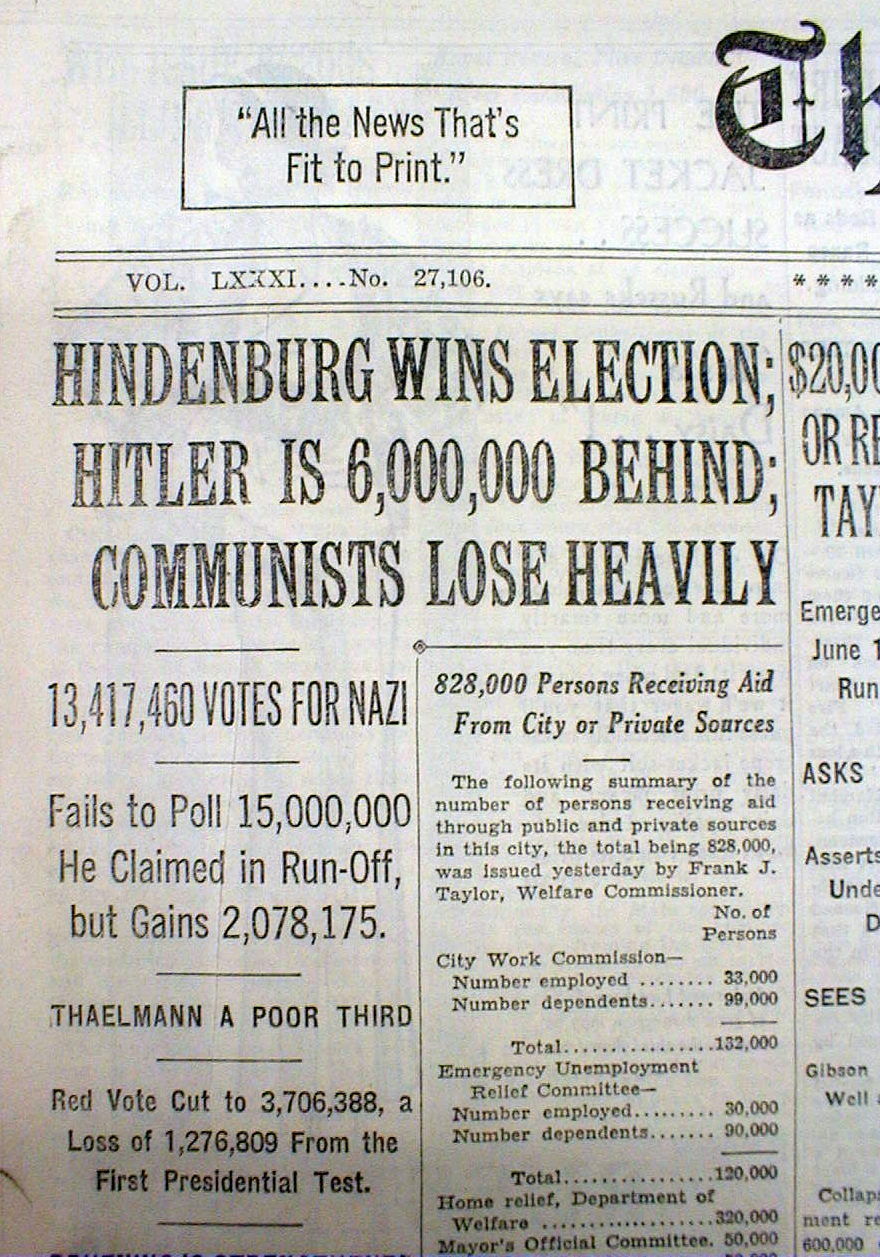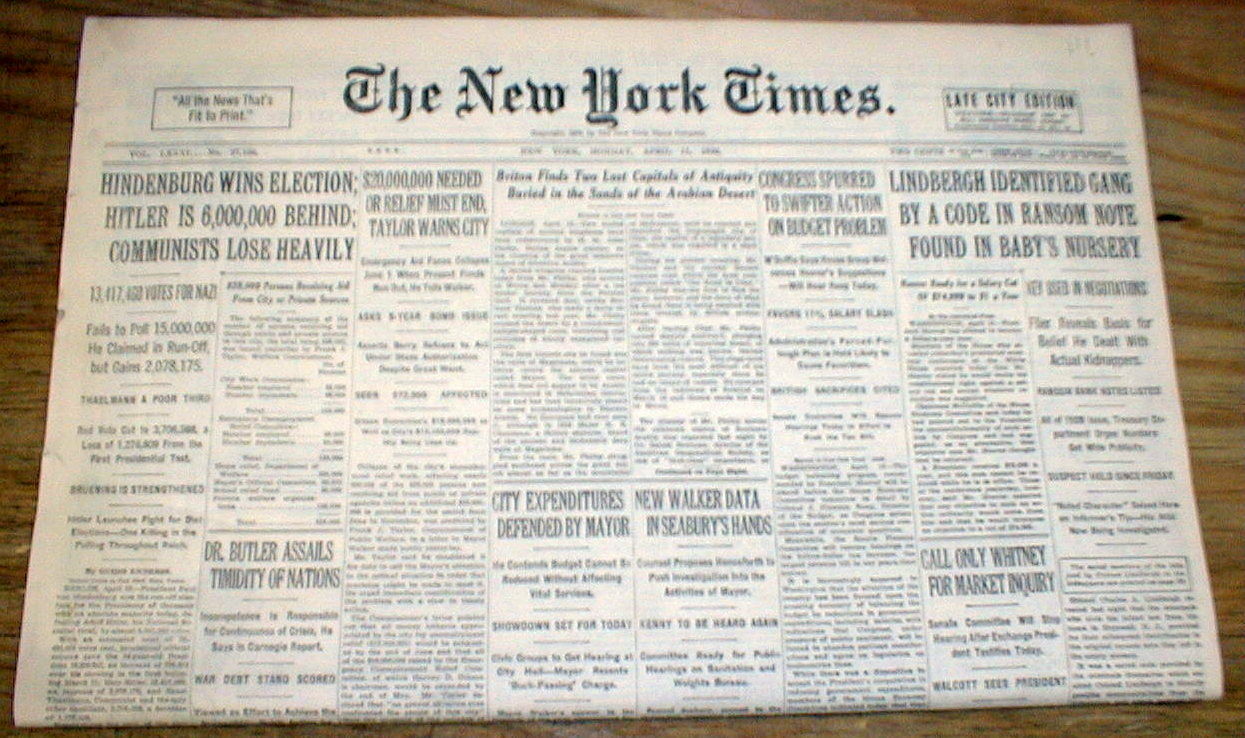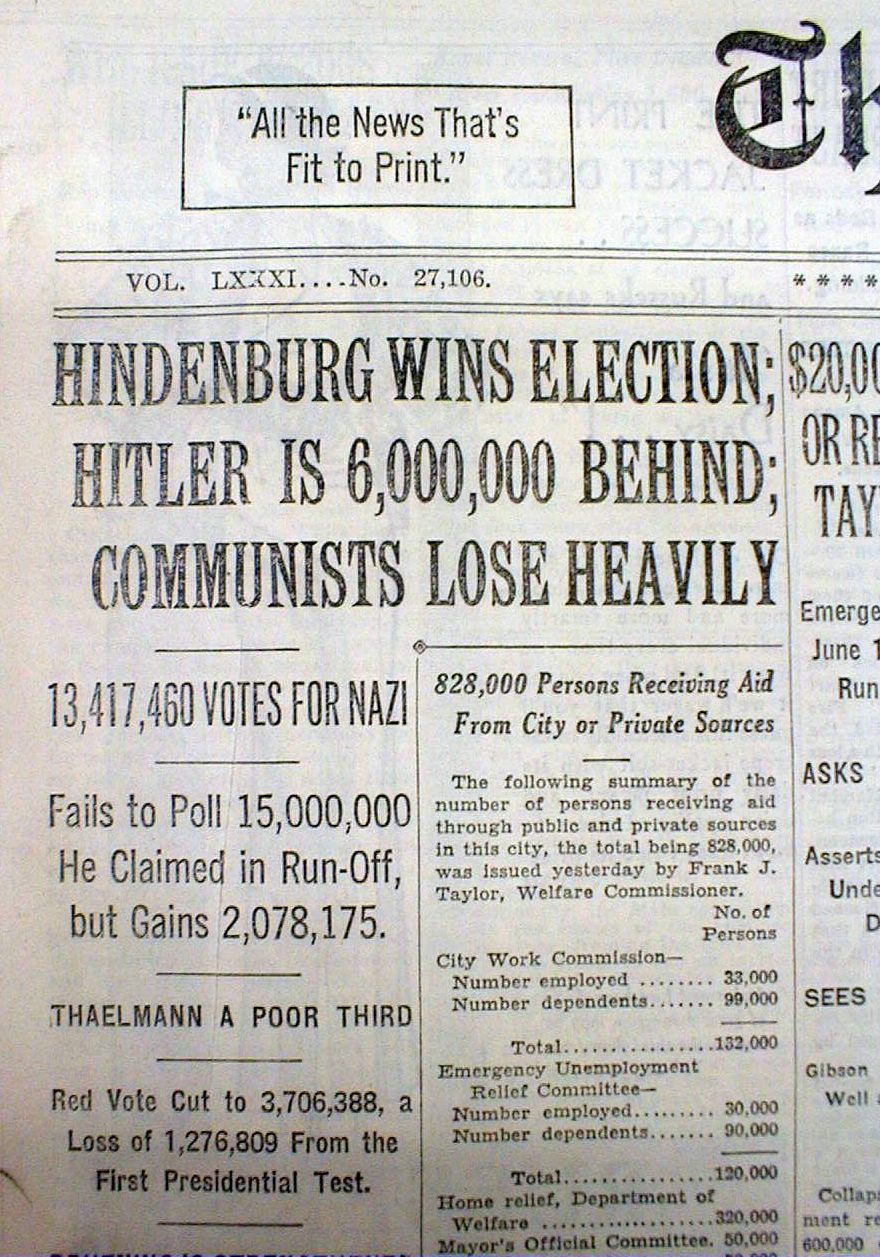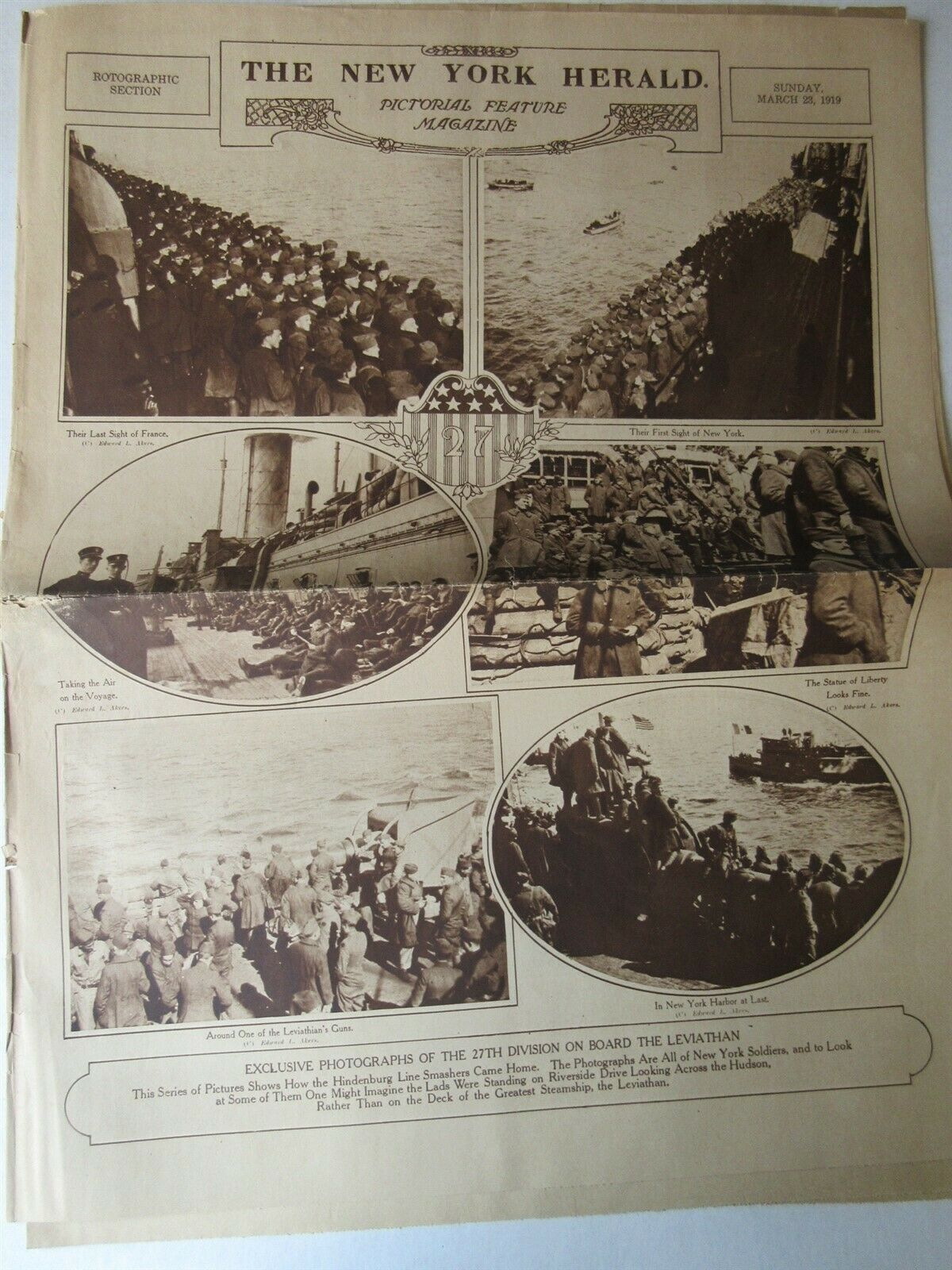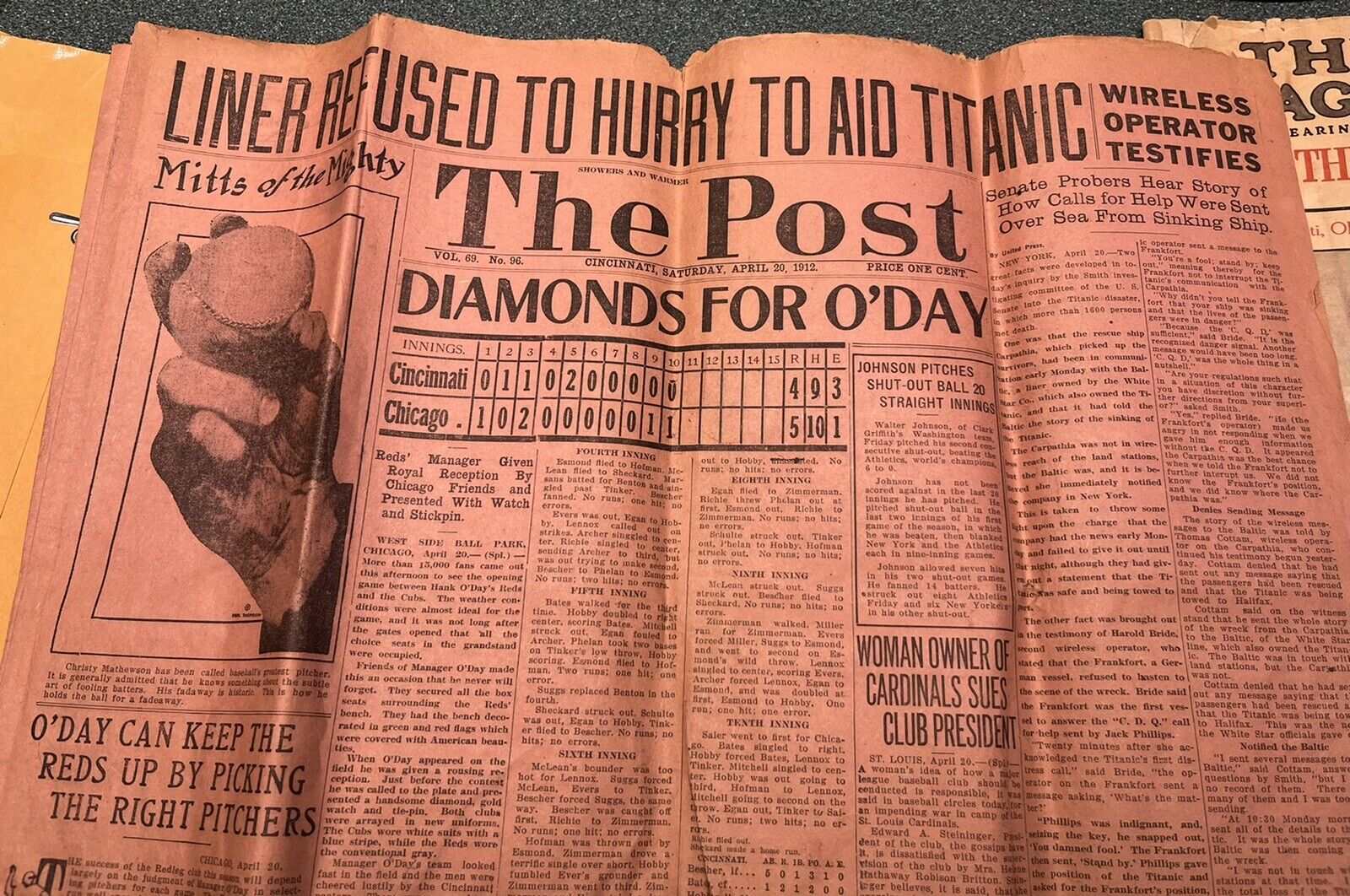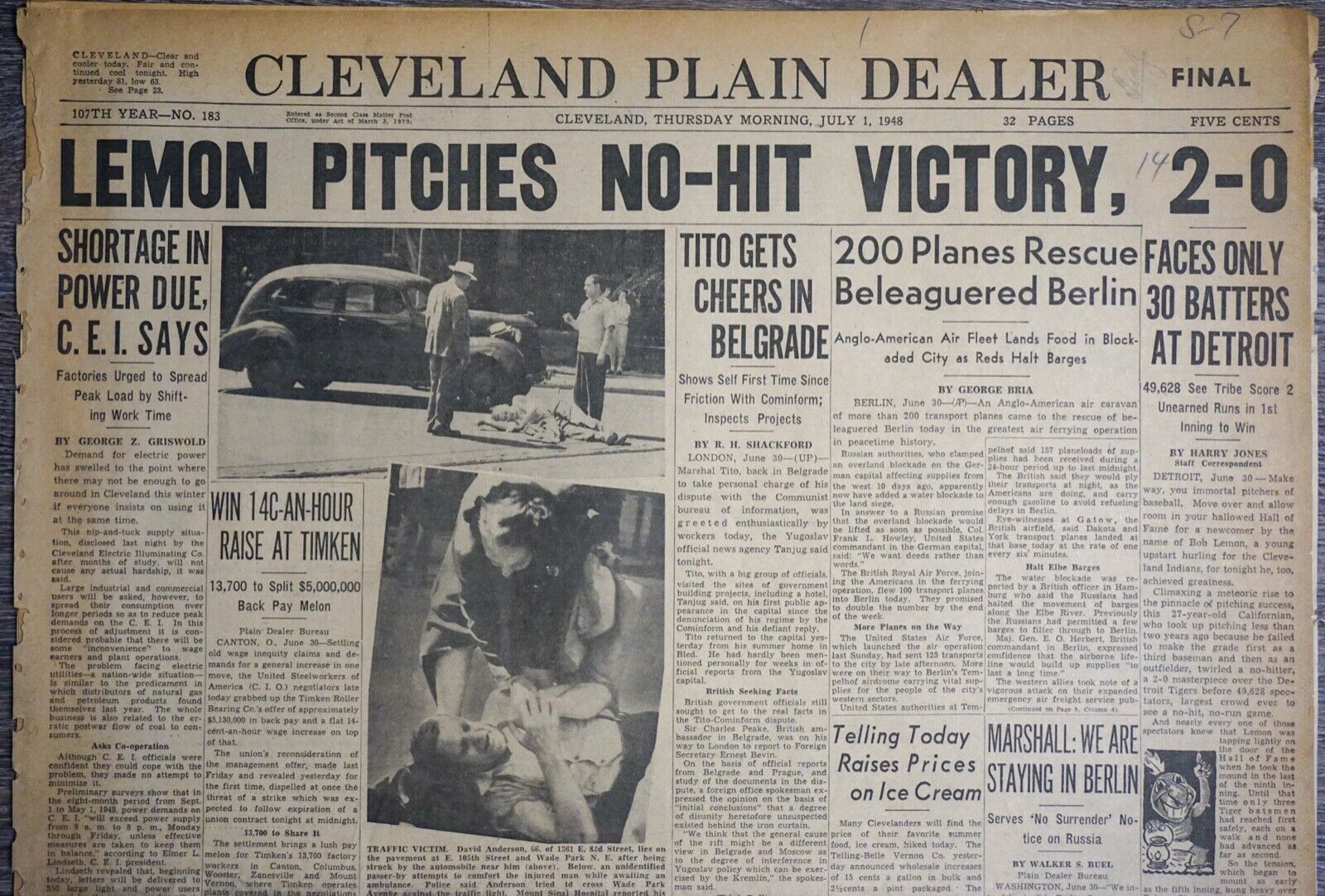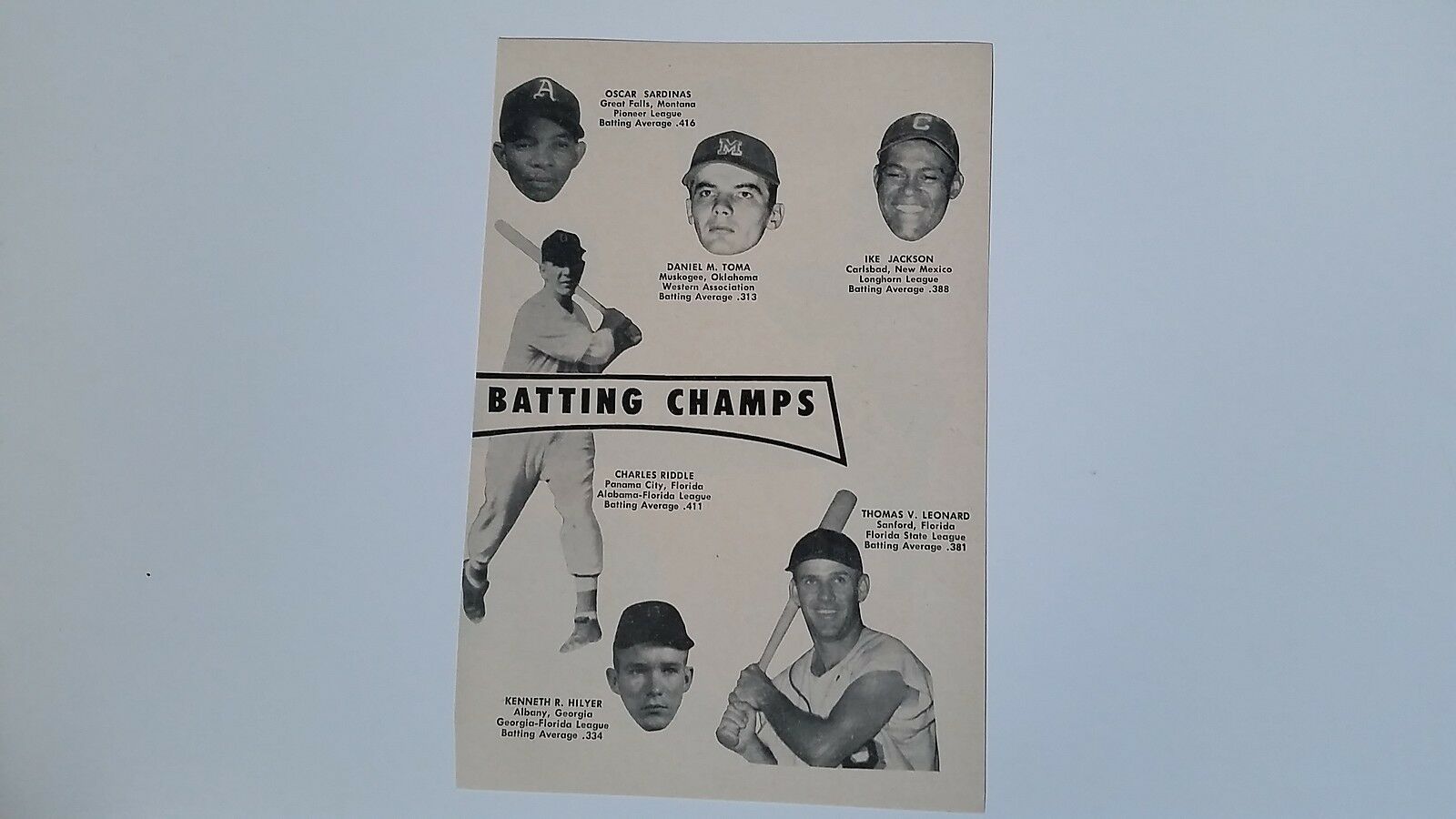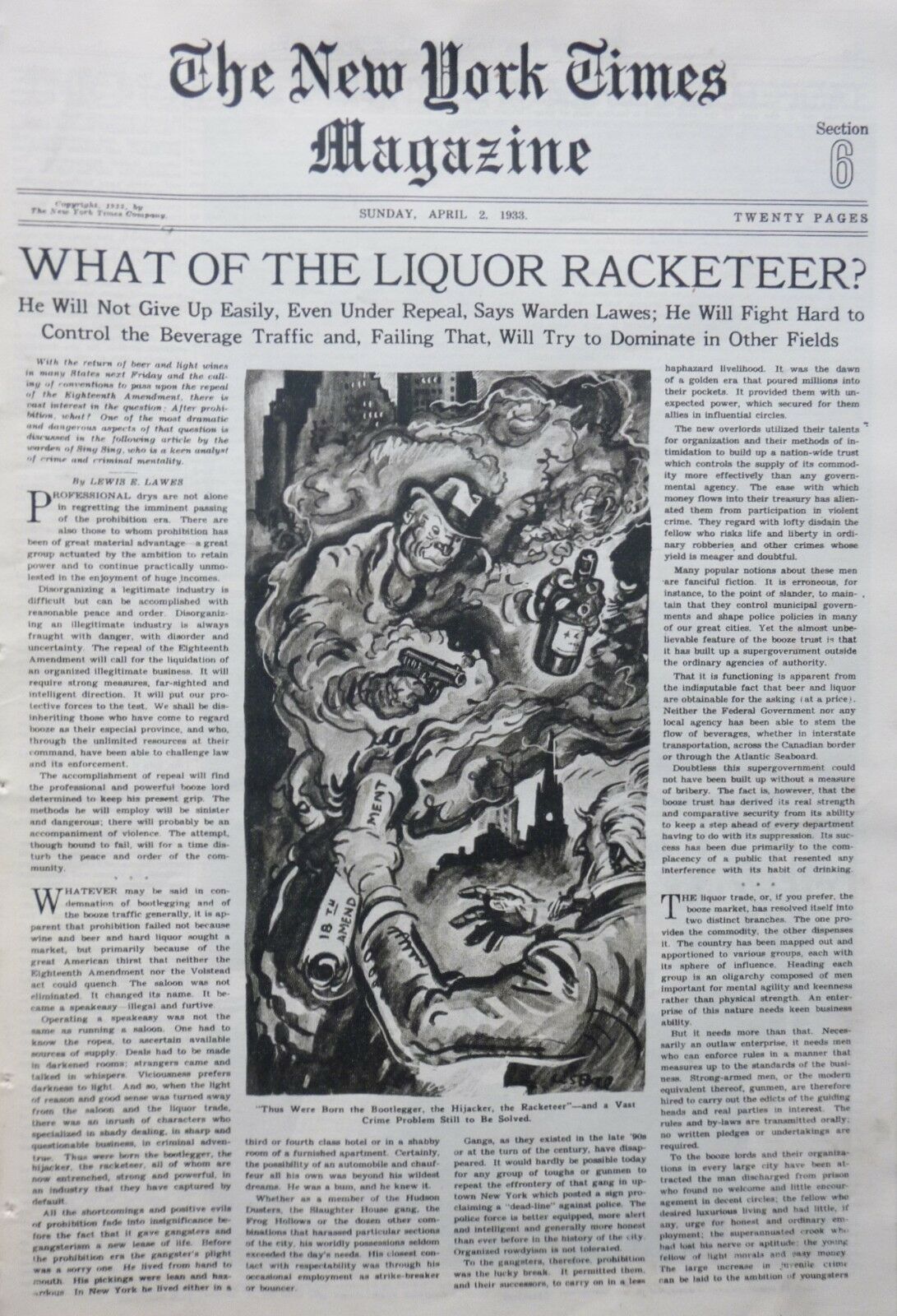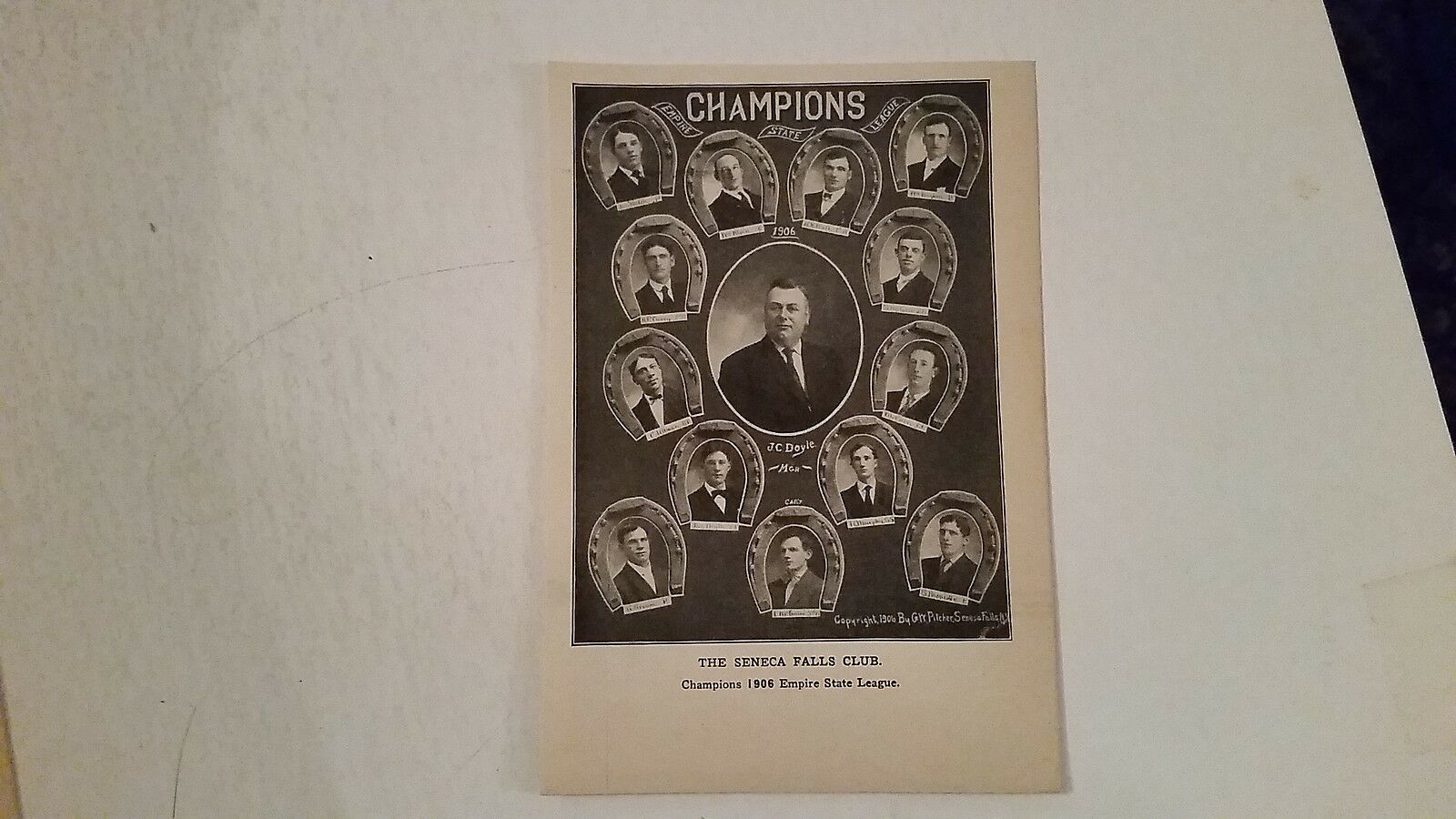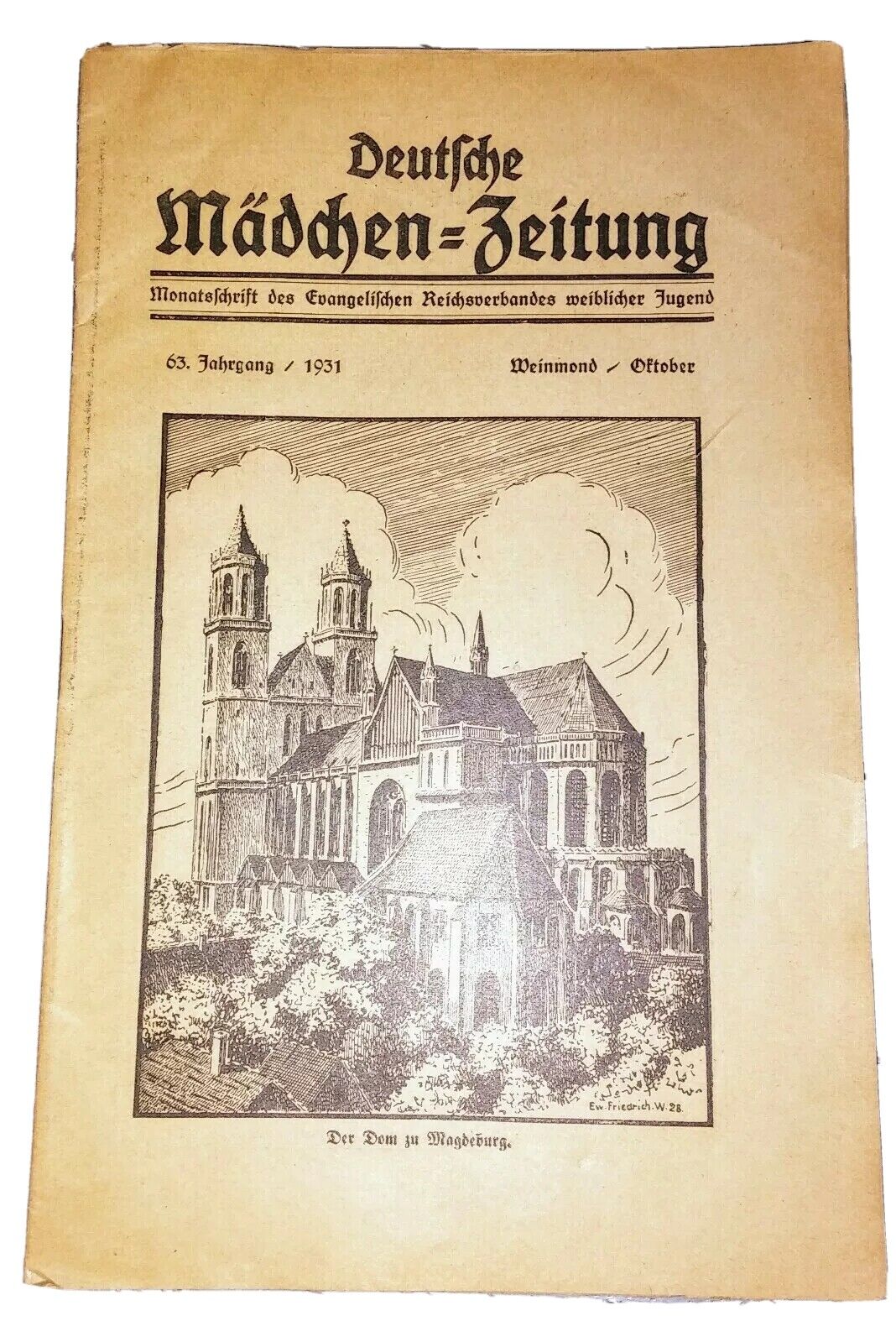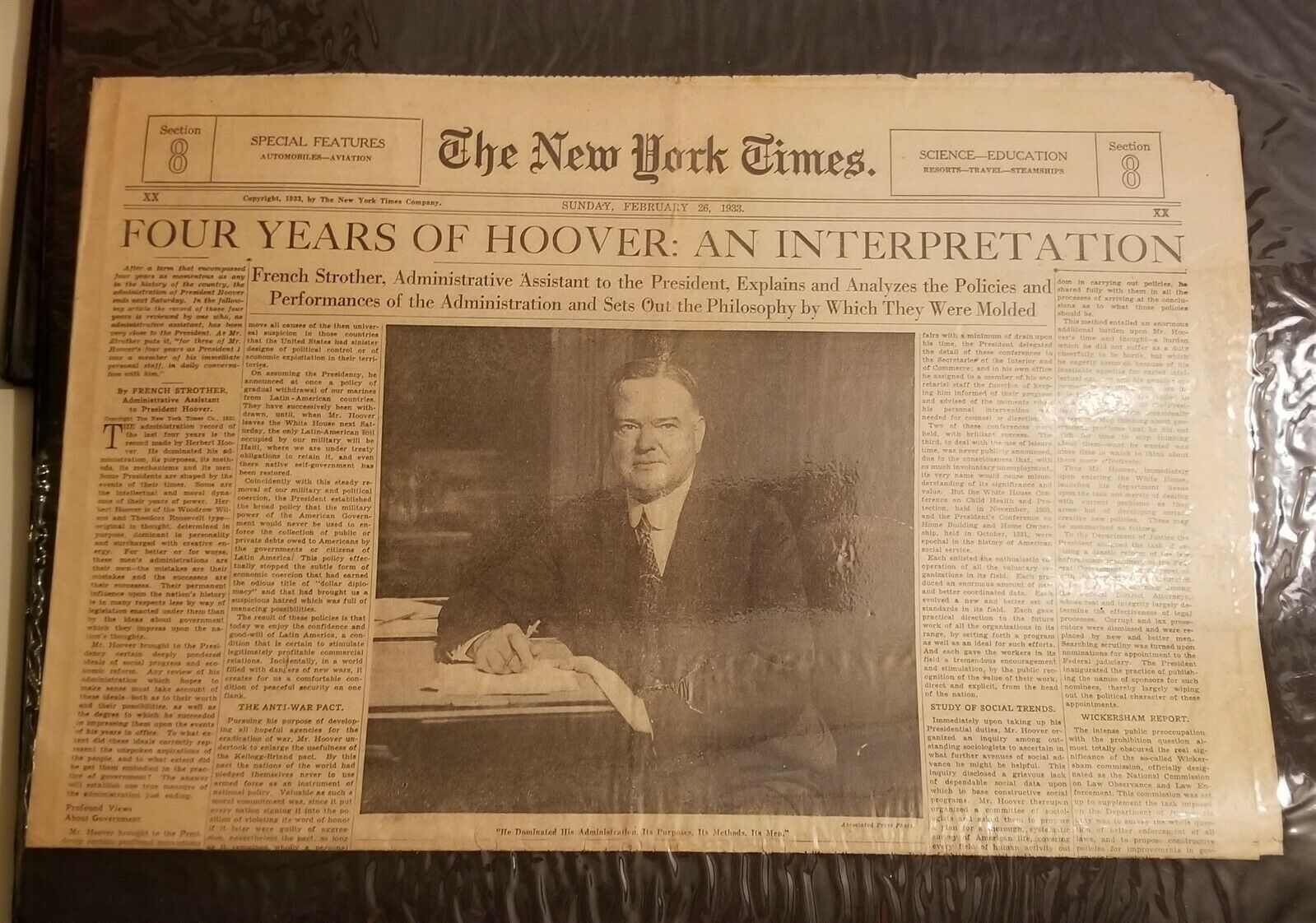-40%
1932 NY Times newspaper PAUL VON HINDENBURG voted GERMAN PRESIDENT over HITLER
$ 15.83
- Description
- Size Guide
Description
1932 NY Times newspaper VON HINDENBURG wins GERMAN PRESIDENT ELECTION over Nazi Party leader Adolph Hitler- inv # 8F-303
SEE PHOTO----- COMPLETE, ORIGINAL NEWSPAPER, the
NY Times
dated April 11, 1932.
This newspaper contains a prominent front page heading with news of the 1932 German Presidential election with
Nazi leader ADOLPH HITLER coming in second to Paul Von Hindenburg
. This was a big step in the rise of Hitler and the Nazis to power in post WW I Germany.
The 1932 German presidential elections were held on 13 March (first round) and 10 April (second round run-off). They were the second and final direct elections to the office of President of the Reich (Reichspräsident), Germany's head of state under the Weimar Republic. The incumbent President, Paul von Hindenburg, first elected in 1925, was re-elected to a second seven-year term of office. His major opponent in the election was Adolf Hitler of the National Socialist German Workers Party (NSDAP).
Under the Weimar system, the presidency was a powerful office and, following his re-election, Hindenburg played an important role in the coming to power of the Nazis, reluctantly appointing Hitler as Chancellor of Germany in January 1933.
The NAZI's after the July 1932 election were the largest German political party, but did not have a majority in the Reichstag. President Hindenburg refused to appoint Hitler Chancellor and instead turned to Papen. The political situatation remain unstable. The newly elected Reichstag in September voted no confidence in the Papen government. The November 1932 Reichstag election results were: NAZI Party 196 seats, Social Democrats 121 seats, The Communist Party 100 seats, and the Centre Party 70 seats. The NAZIs lost a few seats, but continued to be the biggest party in the Reichstag. Hitler continued to demand to be appointed Chancellor, Hindenburg refused saying that he said he did not trust Hitler to rule democratically. Hindenburg preferred Papen, but the Army objected. Hindenburg turned to General Kurt von Schleicher who lasted 57 days. Finally Hindenberg, running out of options, turned to Hitler whom he appointed January 30, 1933. Hidenberg attempted to control Hitler by placing Papen as vice-chancellor and surrounding Hitler with moderate ministers who supported Papen. Hitler by carefully selecting his cabinet posts was within days gaining control. To be sure of success, however, he needed a majority in the Reichstag. He insisted on a new election. In the middle of the elections the Reichstag went up in flames on February 27, 1933. A Dutch Communist was blamed. Historians still debate who was responsible. Many blamed the NAZIs, but it appears that neither they or the Communist Party was responsible. Hitler took full advantage of the situation and claimed that the fire was a Communist plot, and persuaded Hindenburg to sign an emergency Law for the Protection of the People and State. The law suspended people's rights and allowed the Nazis to arrest many Communists and others. Fear of Communism gained the NAZIs additional support at the polls. The March 1933 election results were: NAZI Party 288 seats, Social Democrats 120 seats, Communist Party 81 seats, Centre Party 73 seats, and Others 85 seats. The NAZIs still did not have a majority. Over half of the voters chose other parties. The Nationalist Party, however, decided to support the NAZIs. Their 53 deputies added to the 288 NAZI deputies provided the slim majority Hitler needed. Hitler immediately put an Enabling Act before the Reichstag and asked the members to vote for it. The Enabling Law (the NAZIs called it the Law for the Removal of Distress from People and Reich) gave Hitler as Chancellor the power to make laws by decree for the next 4 years without Reichstag approval. NAZI SA storm troopers lined the entrance to the Reichstag to intimidate the opposition delegated. Only 94 members Social Democrat deputies (the Communists had been arrested) voted against the Enabling Law. Hitler now had the legal authority to reshape Germany.
Plebiscite Campaign (1934)
The NAZI seizure of power gsave them control of the police. They began arresting political opponents and dealing with them savegly in conentration camps they began building (1933). Many political opponents believing they were in danger of being arrested, fled to the Saarland. It was the only German territory not under NAZI control. As the date for the plebiscite approched, these anti-NAZIs campaigned for a vote against reunification with Germany as long as the NAZIs were in power. They had little impact. Most Saarlanders, however, clearly wanted reunion with Germany. The anti-NAZIs had little success in swaing Saarland public opinion. The NAZIs may have well been popular in the Saarland because of their nationalist image. The Saarlanders were essentially occupied by the French for 15 years and occupations tend to heightn nationalist sentiment. One potential source of opposition could have been the Catholic Church. The Saarland was largely Catholic. The local clergy, however, did not speak against reunion with Germany. There seem to have been several reasons for this. They may have noted the growing Communist Party in France. And the NAZIs as part of their calculated policy focused on the Communists and Socialists during their first years in power. Many Catholics in Germany and the Saarland were not yet aware of the full extent of NAZI hostility to the Church. A Concordat was even signed with the Vatican (1933). Thus remnants of the Catholic Center Party, the nationalists, and the NAZIs all joined forced to campaign to rejoin Germany. The Communists and Social Democrats opposed reunification, but as they had previously supported it, the about face confused voters. The NAZI energetically entered the debate. The pro-unification campaign was well-financed by the NAZIS. The NAZIs sent Winter Relief to the poor. Campaign propaganda pointed out to teachers and state employees the higher wages and pension benefits. Much was also made with the apparent success in dealing with the Depression and the worsening Depression in France. German radios (People's Receivers) were distributed in the Saarland. Over 80,000 pro-unification posters went up. About 47,000 Saarlnders living in the Reich were transported so they could vote. The opposition campaign was poorly financed and disorganized. Added to this was widespread violence aimed at those opposing unification. SA members with iron bars attacked Social Democratic meetings. Individuals attempting to distribute anti-unification literature were beaten, some even shot. SS units infiltrated to help add to the violence. The violence was noted by international observers. The police and French military forces did little to stop the violence, apparently because of their poltical views toward Communists and Socialists. It is likely that many who opposed reunification did not want to speak out to openly about it, realizing what would happen after the NAZIs took over. Another factor the vote is that the labor movement was not strong. The strong Catholic influence affecting participation in the labor movement. And before the War the Prussian state was a major employer, for example, operating the coal mines.
Excellent condition. This newspaper is printed on high quality library rag paper, and is as white and supple as the day it came off the press in 1932 !! This listing includes the complete entire original newspaper, NOT just a clipping or a page of it. STEPHEN A. GOLDMAN HISTORICAL NEWSPAPERS stands behind all of the items that we sell with a no questions asked, money back guarantee. Every item we sell is an original newspaper printed on the date indicated at the beginning of its description. U.S. buyers pay priority mail postage which includes waterproof plastic and a heavy cardboard flat to protect your purchase from damage in the mail. International postage is quoted when we are informed as to where the package is to be sent. We do combine postage (to reduce postage costs) for multiple purchases sent in the same package.
We list thousands of rare newspapers with dates from 1570 through 2004 on Ebay each week. This is truly SIX CENTURIES OF HISTORY that YOU CAN OWN!
Stephen A. Goldman Historical Newspapers has been in the business of buying and selling historical newspapers for over 45 years. Dr. Goldman is a consultant to the Freedom Forum Newseum and a member of the American Antiquarian Society. You can buy with confidence from us, knowing that we stand behind all of our historical items with a 100% money back guarantee. Let our 45+ years of experience work for YOU ! We have hundreds of thousands of historical newspapers (and their very early precursors) for sale.
.
